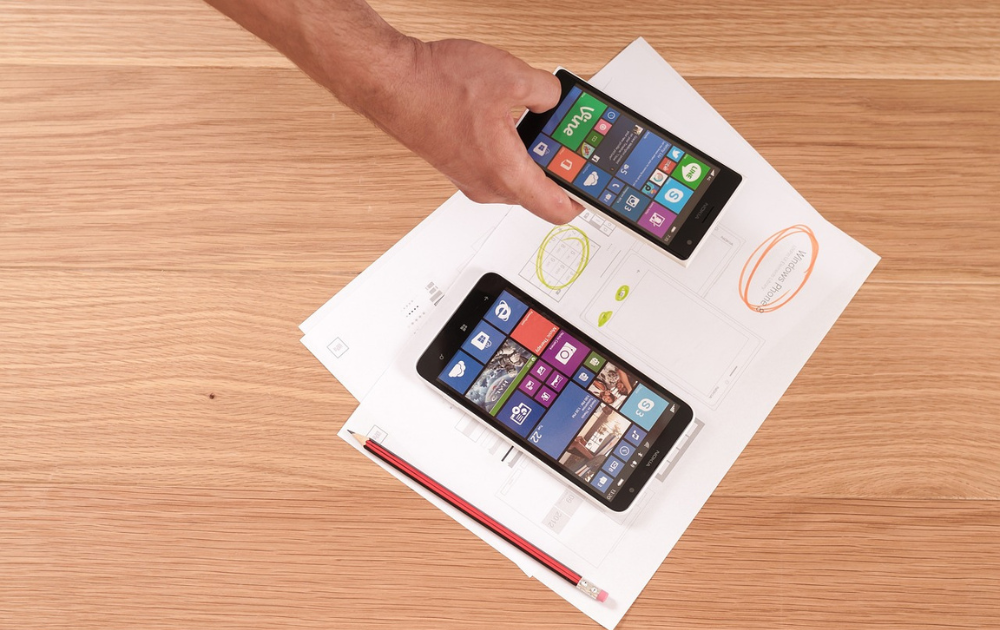Introduction:
Mobile marketing is evolving at a rapid pace, with new mobile marketing trends and technologies reshaping the landscape. In this article, we’ll explore 20 cutting-edge mobile marketing trends that are driving innovation and redefining digital engagement in today’s mobile-first world.
1. What is Mobile Marketing?
Mobile marketing refers to the use of mobile devices such as smartphones and tablets to promote products and services through various channels like websites, email, social media, and apps. It encompasses a wide range of techniques including mobile-optimized websites, app-based marketing, SMS campaigns, and location-based targeting.
2. Evolution of Mobile Marketing
The journey of mobile marketing began with the advent of SMS advertising in the early 2000s, gradually evolving into mobile web advertising with the rise of smartphones. Today, it has transformed into a multifaceted approach incorporating technologies like augmented reality (AR), virtual reality (VR), and artificial intelligence (AI) to deliver personalized and immersive experiences to users.
20 Exciting Mobile Marketing Trends to Skyrocket Your Campaigns:
Here are 20 Exciting Mobile Marketing Trends
1. Hyper-Personalization:
Hyper-personalization involves leveraging data analytics and AI to deliver highly targeted and customized experiences to individual users, enhancing engagement and conversion rates.
2. Progressive Web Apps (PWAs):
PWAs combine the best features of websites and native apps, offering fast loading times, offline functionality, and push notifications, making them a popular choice for mobile marketing.
3. Conversational Marketing:
Conversational marketing involves using messaging apps, chatbots, and AI-powered assistants to engage with customers in real-time conversations, providing personalized assistance and driving sales.

4. Video Marketing Dominance:
Video content continues to dominate mobile platforms, with short-form videos, live streaming, and interactive video ads capturing the attention of mobile users and driving engagement.
5. Social Commerce Integration:
Social media platforms are increasingly integrating e-commerce features, allowing users to shop directly from posts, stories, and live streams, blurring the lines between social media and online shopping.
6. Augmented Reality (AR) Advertising:
AR advertising enables brands to create immersive and interactive experiences for users, allowing them to visualize products in their environment before making a purchase decision.
7. Voice Search Optimization:
With the rise of voice-activated assistants, optimizing content for voice search queries is essential for improving visibility and driving traffic from mobile devices.
8. Micro-Moments Marketing:
Micro-moments marketing involves identifying and capitalizing on fleeting moments when consumers turn to their mobile devices for immediate needs, delivering relevant and timely content.
9. User-Generated Content (UGC) Campaigns:
UGC campaigns leverage user-generated content such as reviews, testimonials, and social media posts to build trust, authenticity, and engagement with the audience.
10. Influencer Collaborations:
Partnering with influencers on social media platforms can amplify brand reach, credibility, and engagement, as influencers connect with their followers authentically.
11. Interactive Polls and Quizzes:
Interactive content formats like polls and quizzes encourage user participation and engagement, providing valuable insights into consumer preferences and behavior.
12. Geofencing and Location-Based Marketing:
Geofencing technology enables businesses to target users based on their real-time location, delivering personalized offers, promotions, and notifications.
13. AI-Powered Chatbots:
Chatbots powered by artificial intelligence provide instant customer support, personalized recommendations, and transactional assistance, enhancing the overall user experience.
14. Subscription-Based Models:
Subscription-based models offer consumers access to premium content, features, and services through recurring payments, fostering customer loyalty and recurring revenue streams.

15. Cross-Platform Integration:
Cross-platform integration enables seamless connectivity and synchronization across multiple devices and channels, providing a unified experience for users.
16. Gamification Strategies:
Gamification techniques such as challenges, rewards, and leaderboards motivate user engagement and participation, driving brand loyalty and retention.
17. 5G Technology Adoption:
The widespread adoption of 5G technology promises faster speeds, lower latency, and higher bandwidth, enabling richer multimedia experiences and innovative mobile applications.
18. Storytelling Through Social Media:
Storytelling on social media platforms allows brands to connect with their audience authentically, humanizing their brand and fostering emotional connections.
19. Data Privacy and Security:
Ensuring data privacy and security is paramount in mobile marketing, as consumers demand transparency, control, and protection of their personal information.
20. Sustainability and Social Responsibility:
Consumers are increasingly drawn to brands that demonstrate a commitment to sustainability, social responsibility, and ethical practices, influencing their purchasing decisions.
Conclusion:
These 20 exciting mobile marketing trends offer valuable insights and opportunities for businesses to innovate, engage, and connect with their audience in meaningful ways. By embracing these mobile marketing trends and staying ahead of the curve, brands can navigate the dynamic landscape of mobile marketing and drive success in the digital age.
FAQ
1. What is hyper-personalization in mobile marketing trends?
Hyper-personalization in mobile marketing trends refers to using data analytics and AI to deliver customized experiences to users. It involves analyzing user behavior to tailor content and promotions, enhancing engagement.
2. How can businesses leverage progressive web apps (PWAs) for mobile marketing?
Businesses can use PWAs to offer fast-loading web applications with offline functionality and push notifications, providing seamless experiences without app downloads.
3. What is conversational marketing, and how does it benefit businesses?
Conversational marketing engages users in real-time conversations through messaging apps and chatbots, providing personalized assistance and driving sales.
4. How can brands incorporate augmented reality (AR) advertising into mobile marketing?
Brands can use AR advertising to create immersive experiences for users, showcasing products in virtual environments and engaging them in unique ways.
5. What are micro-moments, and how can businesses capitalize on them in mobile marketing?
Micro-moments occur when users quickly look to their devices to fulfill immediate needs. Businesses can capitalize on these moments by delivering timely content that addresses users’ needs.
6. How can businesses effectively utilize user-generated content (UGC) in mobile marketing?
Businesses can leverage UGC such as reviews and social media posts to build trust and engagement among their audience.
7. What role do influencers play in mobile marketing, and how can brands collaborate with them?
Influencers endorse products on social media, amplifying brand visibility. Brands can collaborate with influencers to leverage their reach and credibility.
8. How can businesses incorporate gamification strategies into mobile marketing efforts?
By integrating game-like elements into apps and campaigns, businesses can motivate user engagement and foster brand loyalty.
9. What are the benefits of utilizing 5G technology in mobile marketing?
5G technology offers faster speeds and enhanced connectivity, enabling richer multimedia experiences and innovative applications.
10. Why is data privacy and security important in mobile marketing, and how can businesses ensure compliance?
Data privacy is essential to maintain trust and comply with regulations. Businesses can ensure compliance by implementing security measures and transparent policies.

